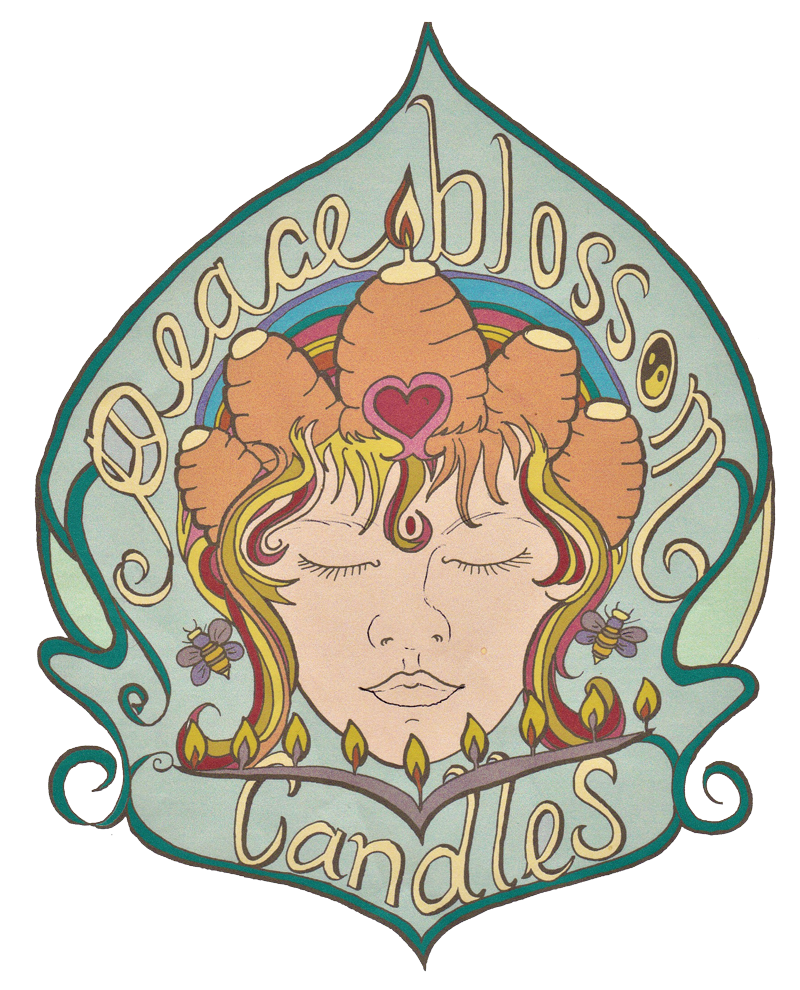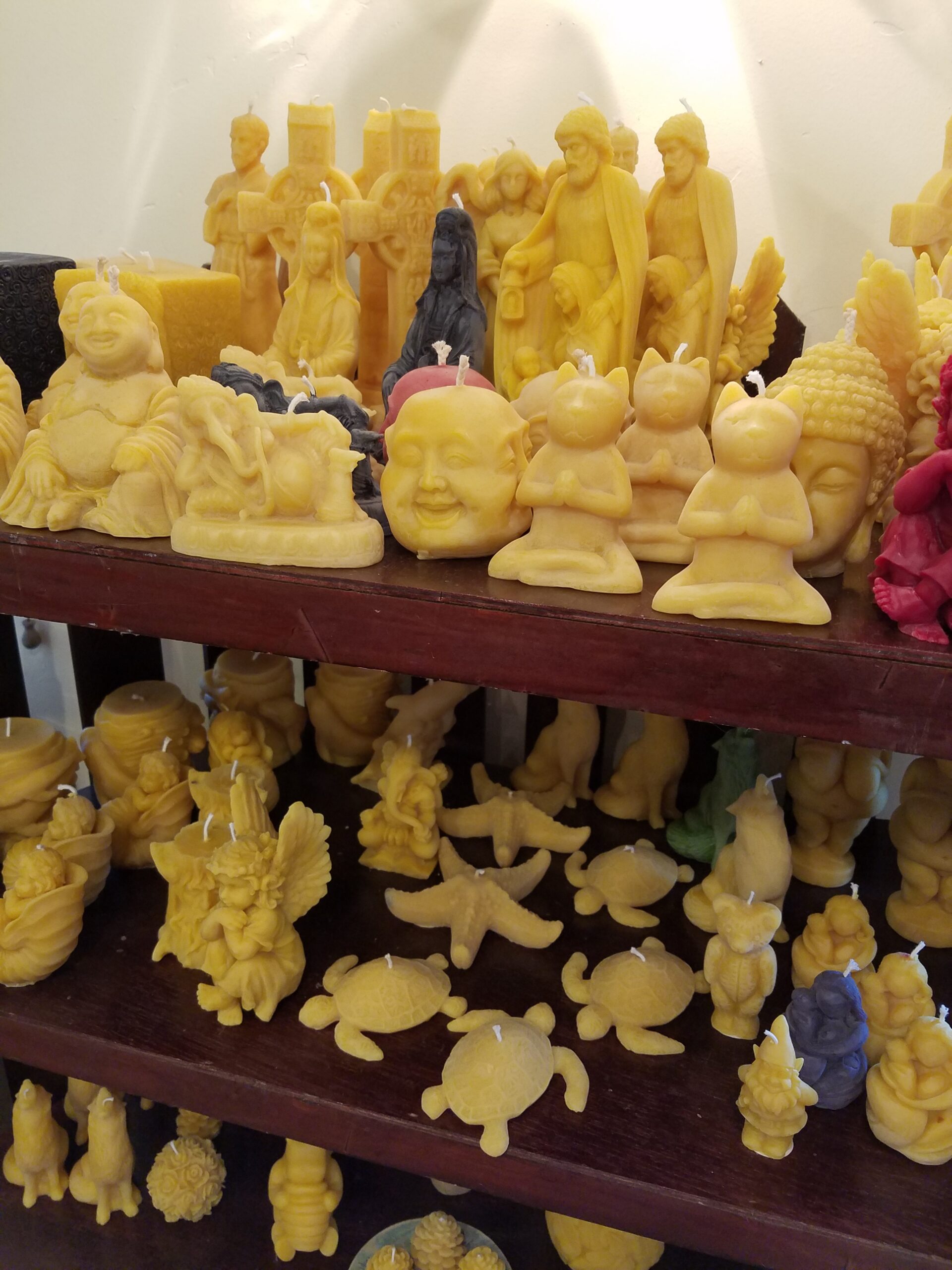FREQUENTLY ASKED CANDLE QUESTIONS:
Q. What are your candles made of?
A. All of our candles without exception, are hand-poured using 100% beeswax. There are no chemicals, scents, dyes, or other adulterants in our candles. Our wicks are 100% cotton braid. These candles are ideal for chemically sensitive individuals or those suffering from allergies.
Q. Why choose real Beeswax?
A. So many Reasons!
1. Health. Burning 100% pure beeswax is good for you and your home! No scents have been used nor are there any chemicals, paper or metals in the wicks. Therefore our candles are ideal for those with allergies and/or multiple chemical sensitivity. Paraffin is a wax derived from oil, therefore when you burn this in you home you are volitalizing hydrocarbons which you breathe and which contribute to indoor air pollution. Conversely, beeswax, when burned, actually creates negative ions in the air, similar to those produced after a thunderstorm. This is healthful.
2. Aesthetic. The flame of a beeswax candle is so soothing and serene — nothing like the “jumpy” flame produced by synthetics. Try it for yourself. And the natural scent is…well, there’s nothing like it. So wonderful! Just like honey! (Note: the natural beeswax has a much more distinctive and stronger aroma than the white.)
3. Social. By supporting small family beekeepers, you are keeping money in the United States’ rural areas, not exporting jobs to China or supporting large corporations with often questionable ethics.
4. Environmental. Beeswax is renewable and not made from oil. No toxic wastes are produced.
Q. Why the difference in the golden-colored wax shades?
A. The natural beeswax, our own or purchased from local beekeepers, is melted from the “cappings” or by-product wax of the honey extraction process. As much honey as is possible is removed. The mixture of wax and honey is then heated. The wax rises to the top and the remaining honey is drained off. The beeswax is filtered to remove foreign objects. At this point, the color may range from light lemon yellow to ochre to brown. The difference in color is primarily due to how light the wax was in the comb that the honey was extracted from.
Q. How do your candles burn?
A. We spend a great deal of time test-burning new candles, determining which wick to use to ensure your candles will burn correctly. All pillars, tapers and votives will burn very well with a minimum of dripping. Novelty candles (i.e., shapes) will drip!! We have fitted them with the best wicks to minimize this but there is nothing that can be done to prevent it so enjoy them as they burn!!! To avoid damaging your surfaces always use a suitable dish or holder under ANY candle and NEVER leave a burning candle unattended.
Q. How is it that you can offer both natural-colored and white beeswax? Why the difference in the color?
A. The natural beeswax, our own or purchased from local beekeepers, is melted from the “cappings” or by-product wax of the honey extraction process. As much honey as is possible is removed. The mixture of wax and honey is then heated. The wax rises to the top and the remaining honey is drained off. The beeswax is filtered to remove foreign objects. At this point, the color may range from light lemon yellow to ochre to brown. The difference in color is primarily due to how light the wax was in the comb that the honey was extracted from. The white wax is more highly refined. The bleaching method to obtain our White Beeswax is not chemical, but it is a PHYSICAL METHOD. The Yellow Beeswax is warmed up to 100 °C and melted. Decoloration earth and coal (carbon) are added then it is filtered through a < 5 micron filter for a few times to obtain the total elimination of the coal particles. The end result is a nice white product that is still pure beeswax and chemical-free.
Q. Why is getting domestically-sourced wax so important?
Quite a lot of cheap beeswax comes from China. Honey there has been found to be contaminated with banned pesticides and with lead, from containers the honey was stored in. All these chemicals will seep into the wax as well.
Q. My candles have a whitish film on them after being stored for a while. What do I do?
A. This film is called “bloom” and is actually a sign that you have pure beeswax candles. It is harmless, and does not mean the wax is deteriorating in any way. To remove it on smoothly shaped candles, wipe gently with a soft cloth. For deeply incised designs or novelty shaped candles, use a hair dryer set on medium. Do not aim the dryer too long in one place or you will melt the wax! Keep the dryer moving. This treatment will also refresh the scent of the candle, if it happens to diminish over time.
Q. My candles are getting dusty. What do I do?
Just wash with cool water. This is an excellent way to clean your candles without hurting them. Don’t use hot water though; as this may soften the wax.
Q. Your Candles are to pretty to burn, so I just look at and never burn them!
A. Wrong answer! See above! Use and ENJOY your beeswax candles! You can always get more, promise!

